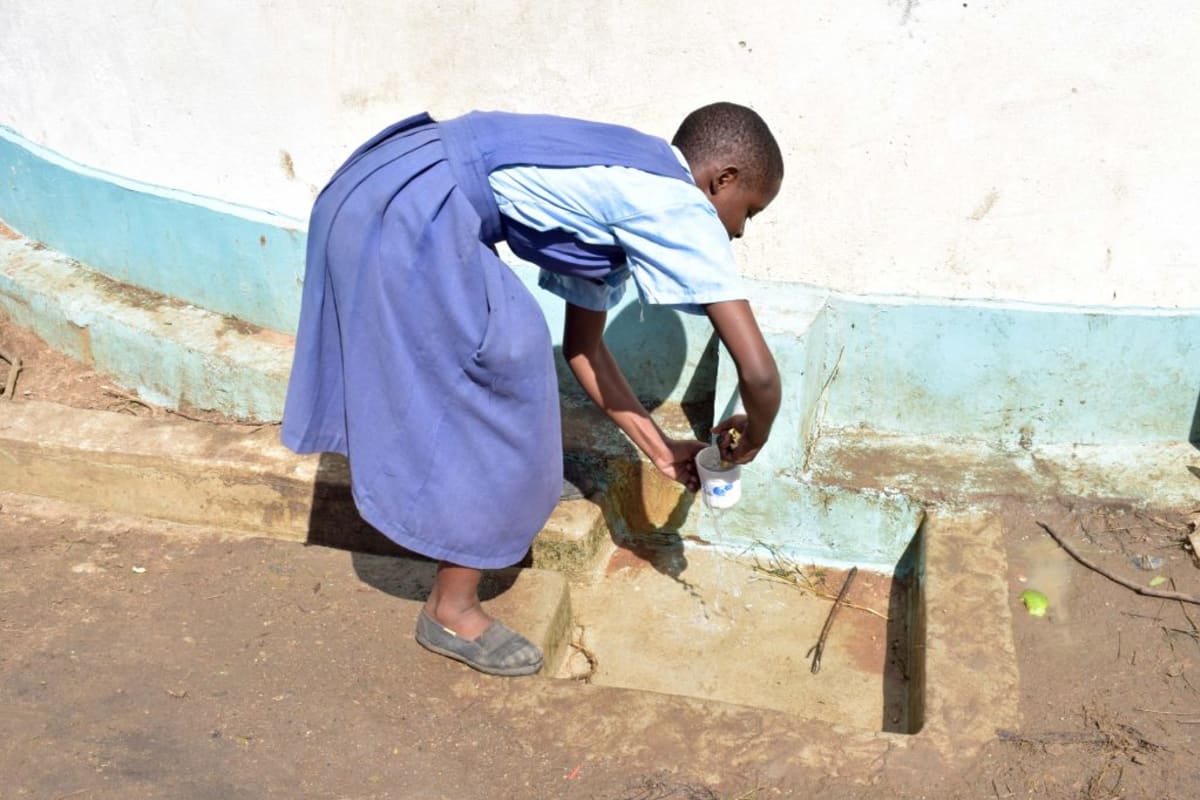This project is a part of our shared program with Africa Sand Dam Foundation. Our team is pleased to directly share the below report (edited for clarity, as needed).
Welcome to the School
Ngaa Primary School was started in 1982 to serve the children of Ngaa Village. Enrollment is at 450 this year, all taught by just 10 teachers. The school also employs two support staff.
Ngaa Primary School has enjoyed a close relationship with Kiluta Sand Dam Self-Help Group, which has been working to build clean water projects in their villages. The group members send their children to this school, and are aware of their dire water situation. It is for this reason that they are committed to constructing a rainwater catchment tank at the school.
Water Situation
The school buys large quantities of water, delivered from personal boreholes around Matiliku at 3,000 shillings for a 2,000-liter truckload. The water is then poured into a 3,000-liter plastic tank that the school uses to store water. Sometimes the trucks have to park at the school until the water is used up because there isn't enough space in the plastic tank. Pupils are also required to carry water in three to five-liter containers to school every morning from their homes.
Both financial and health issues arise because of this situation. The school must consistently order these water deliveries at what is an exorbitant price in Kenya. But this water isn't enough, and students must carry water for personal use every morning. The quality of the water cannot be verified, and teachers are unable to force students to collect water from safe sources. After drinking this water, students suffer from typhoid, bilharzia, and ringworm.
13-year-old female student John Ndanu said, "Every day after school I walk to Ikuma River, three kilometers away to fetch water for carrying to school and for house chores. In the morning, carrying five liters of water to school has not been easy; sometimes the fatigue has led to low levels of concentration in class."
12-year-old student Paul Mutua wants to be a lawyer when he grows up. He told us "Sometimes, meals have been served late due to lack of steady water supply. This has caused disruptions to the school routine, leading to loss of time meant for classwork. Again, our toilets and classes are rarely washed, creating an unfavorable learning environment."
Sanitation Situation
There is not enough water for cleaning the latrines, so they are rarely clean. Pupils who use them are at risk of infection. Girls and boys have 15 stalls of latrines each, and the teachers have three that they share. However, many of the girls' and boys' latrines are missing doors, and thus students wait in line to share the other stalls.
There are no hand-washing stations, nor would there be enough water to fill them.
The school has also dug three garbage pits in different locations to give students no excuse when it comes to littering.
Plans: Hygiene and Sanitation Training
Students and staff will be trained for one day. Those in attendance will form a school health club that will promote good hygiene and sanitation practices both at school and home. They will learn all of the steps to proper hand-washing, how to treat water, and how to keep their environment clean. The school will also be taught how to best oversee and maintain their new rainwater catchment tank and hand-washing stations.
Plans: Hand-Washing Stations
Three hand-washing stations will be delivered at the project’s completion. These are 1,000-liter plastic tanks fitted with four taps. The health club and school management will be responsible for making sure tanks are filled with water and that a cleaning agent such as soap or ash is available.
Plans: Rainwater Catchment Tank
We will build a 104,000-liter rainwater catchment tank for this school. This water will benefit the students, teachers, and supplementary staff. Parents will mobilize the materials needed for construction, such as sand and stone. They will also lend some strong arms to help with the actual construction.
The huge capacity of this tank makes the others look tiny in comparison; 104,000 liters should collect enough water to carry students through the entire dry season. As soon as the tank has time to cure, it can begin to collect rainwater for drinking, cooking and cleaning! Teacher Vincent Mutie told us that he and the other teachers are also planning to start a kitchen garden once the tank has collected enough water.

 Rainwater Catchment
Rainwater Catchment
 Rehabilitation Project
Rehabilitation Project






























